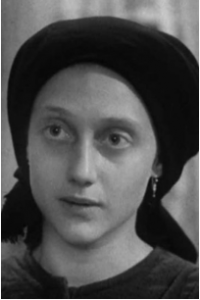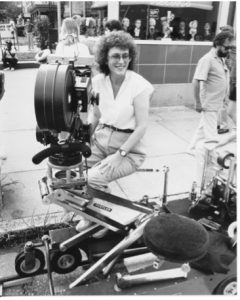HESTER STREET (1975) – AFI Catalog Spotlight
In honor of Jewish American Heritage Month, the AFI Catalog is shining a spotlight on HESTER STREET (1975), Joan Micklin Silver’s directorial debut which screened at the Cannes Film Festival in May 1975 to critical acclaim. The indie picture tells the story of cultural assimilation in New York City’s Jewish enclave of Hester Street at the turn of the 20th century through a feminist lens. It went on to receive a Best Actress Oscar® nomination for Carol Kane, and a WGA Award nomination for Silver’s adaptation of the 1896 novella Yekl, a Tale of the New York Ghetto by Abraham Cahan, who founded the premier Yiddish language newspaper in America. Silver, the daughter of Jewish immigrants, had already written and directed several short films about the experience of Jewish newcomers to America, but she found it challenging to secure funding for her debut feature at a time in which women were rarely given the opportunity to helm studio productions; she was told by an industry executive that “women directors are just one more problem we don’t need.” Adding to the challenge was Silver’s commitment to filming the picture with scenes in Yiddish, with English subtitles, and in black and white photography. Deemed too “ethnic” by Hollywood producers, HESTER STREET was ultimately financed by Silver’s husband, Raphael “Ray” D. Silver, a real estate developer who served as the film’s producer and distributor under the banner of Midwest Film Productions, Inc.
 After working six weeks on her adaptation, and changing the emphasis of the story from the husband’s point of view to the wife’s, Silver began preproduction in the summer of 1973 with a budget of approximately $370,000. Locations in New York City included Morton Street in Greenwich Village (which stood in for Hester Street), where locals were hired as background actors. Although the budget could not accommodate for known talent, several New York performers liked the project enough to work for lower salaries. Almost none of the actors spoke Yiddish prior to production, so they worked with a coach to perfect their dialogue. Principal photography was completed in 34 days, and the film was edited over several months with assistance from noted editor Ralph Rosenblum and filmmaker Elia Kazan.
After working six weeks on her adaptation, and changing the emphasis of the story from the husband’s point of view to the wife’s, Silver began preproduction in the summer of 1973 with a budget of approximately $370,000. Locations in New York City included Morton Street in Greenwich Village (which stood in for Hester Street), where locals were hired as background actors. Although the budget could not accommodate for known talent, several New York performers liked the project enough to work for lower salaries. Almost none of the actors spoke Yiddish prior to production, so they worked with a coach to perfect their dialogue. Principal photography was completed in 34 days, and the film was edited over several months with assistance from noted editor Ralph Rosenblum and filmmaker Elia Kazan.
Despite successful screenings at the USA Film Festival and the Cannes Film Festival, the Silvers were unable to find a suitable distributor and decided to perform that role themselves with the aid of Blaine Novak, a booker who marketed John Cassavetes’ self-distributed picture A WOMAN UNDER THE INFLUENCE (1974). After HESTER STREET opened in New York and Los Angeles in October and November 1975, respectively, General Cinema Corp. picked up the film and it grossed $1.45 million by February 1976. It continued to perform well at the box office and earned $5 million by the end of its theatrical run, an impressive sum for a low-budget indie film at the time.
 HESTER STREET was added to the National Film Registry in 2011. A 4K restoration of the picture was released in 2021 by the Cohen Film Collection with the assistance of Joan Micklin Silver, who died before the film made it back into theaters. Her daughter, filmmaker Marisa Silver, worked in her place as a consultant. When the picture was reviewed again in 2021, critics hailed HESTER STREET as a forgotten masterpiece and lamented the fact that Silver’s name had been widely omitted from the historical canon. The story of immigrant life was praised for its accuracy and its continued relevance to today’s world. Kenneth Turan called HESTER STREET “a charming, wonderfully human film about the agonies, traumas, and embarrassments of becoming an American…Entrancing.”
HESTER STREET was added to the National Film Registry in 2011. A 4K restoration of the picture was released in 2021 by the Cohen Film Collection with the assistance of Joan Micklin Silver, who died before the film made it back into theaters. Her daughter, filmmaker Marisa Silver, worked in her place as a consultant. When the picture was reviewed again in 2021, critics hailed HESTER STREET as a forgotten masterpiece and lamented the fact that Silver’s name had been widely omitted from the historical canon. The story of immigrant life was praised for its accuracy and its continued relevance to today’s world. Kenneth Turan called HESTER STREET “a charming, wonderfully human film about the agonies, traumas, and embarrassments of becoming an American…Entrancing.”